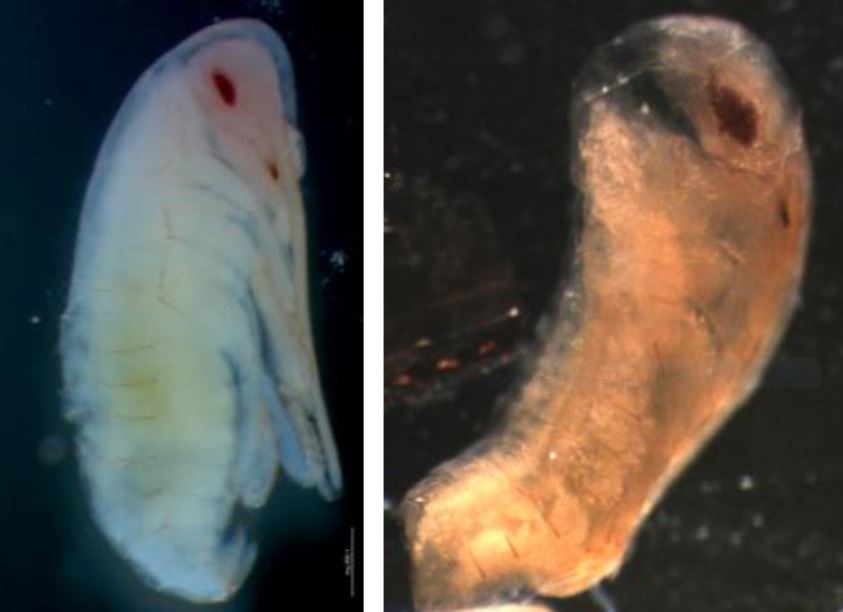Unveiling the secrets of metamorphosis
Unveiling the secrets of metamorphosis
The E93 protein could explain the evolution of metamorphosis
Butterflies and cockroaches undergo metamorphosis, a process that catapults them into adulthood through a series of morphological changes. The butterfly caterpillar, however, transforms into a beautiful flying insect, while the cockroach hardly changes. Both types of metamorphosis hold secrets for the scientific community, but today we are closer to discovering them.
A study published in the scientific journal PNAS and led by Xavier Bellés, principal investigator at the Institute of Evolutionary Biology (UPF-CSIC), has discovered that the E93 protein could be a determining element for the evolution of insect metamorphosis.
This protein is known for its role in triggering metamorphosis in the post-embryonic phases of insects, which is why it determines their passage to adulthood. However, the evolution between the different types of metamorphosis remained unknown, as well as the factor that determined this evolutionary transition. On the other hand, although embryogenesis is important in metamorphosis, there was not much research on it.
The study has shown that the amount of E93 protein in the embryonic phase is decisive in the metamorphosis of insects, as well as in the development of the embryo. In addition, it concludes that this protein could be behind the evolution between both types of metamorphosis.
"The mystery of insect metamorphosis has fascinated the human species since time immemorial, and in the last 10 years, many details have been discovered." Xavier Bellés, CSIC research professor, points out.
The results of the research reveal that insects with simple metamorphosis, that is, those that do not undergo major morphological changes during metamorphosis, present high levels of the E93 protein in the embryonic stage. In complete metamorphosed insects such as butterflies, on the other hand, E93 is found at very low or non-existent levels. This seems to indicate that the disappearance of this protein is crucial for complete metamorphosis.
Research has also discovered that the presence of the E93 factor in simple metamorphosis insects is essential for the correct development of the embryo, as in the case of cockroaches.
"In cockroaches, the reduction of E93 levels causes the embryo to not form properly." Indicates Anna Fernández-Nicolás, first author of the work, who did part of her doctoral studies at the IBE (CSIC-UPF).
In contrast, in insects with complete metamorphosis, low levels of E93 mark the appearance of this type of metamorphosis.
 To the left, the image shows a healthy cockroach embryo. An embryo lacking the E93 protein can be seen in the right image.
To the left, the image shows a healthy cockroach embryo. An embryo lacking the E93 protein can be seen in the right image.
Two very different metamorphoses
Because of simple metamorphosis, cockroaches only go through three instars in their lifetime. From the egg hatches a nymph very similar to the adult, although smaller and, after several moults, the nymph reaches adulthood.
On the other hand, the butterfly egg hatches a larva that will go through different molts until reaching an intermediate stage of pupation or chrysalis, after which it will undergo complete metamorphosis.
"Our hypothesis is that E93 determines the nymphal genetic program and that its reduction in the embryo has been decisive for the appearance of the larva and the evolution of complete metamorphosis." Anna Fernandez points out.
“This hypothesis represents a new paradigm in the study of insect metamorphosis”, emphasizes Xavier Bellés.
This type of complete metamorphosis is highly advantageous since larvae and adults do not compete for the same resources. A competition that is observed between nymphs and adults of insects with simple metamorphosis.
"The evolutionary corollary of this hypothesis is that the reduction of E93 in the embryo would be a necessary condition for the formation of a larva different from the adult, and inventing the successful complete metamorphosis", concludes Xavier Bellés.
The work being published now is the result of an international collaboration between the Institute of Evolutionary Biology (CSIC-UPF) in Barcelona, the Jagiellonian University of Krakow (Poland) and the University of Kyoto (Japan).
Reference article: Fernandez-Nicolas, A., Macha, G., Ventos-Alfonso, A., Pagone, V., Minemura, T., Ohde, T., Daimon, T., Ylla, G., Belles, X. 2023. Reduction of embryonic E93 expression as a hypothetical driver of the evolution of insect metamorphosis. Proceedings of the National Academy of Sciences USA 120. February 2023. DOI: 10.1073/pnas.2216640120
